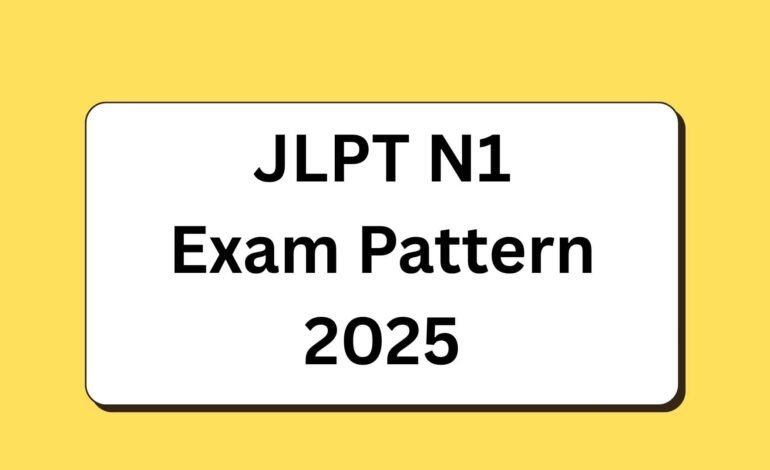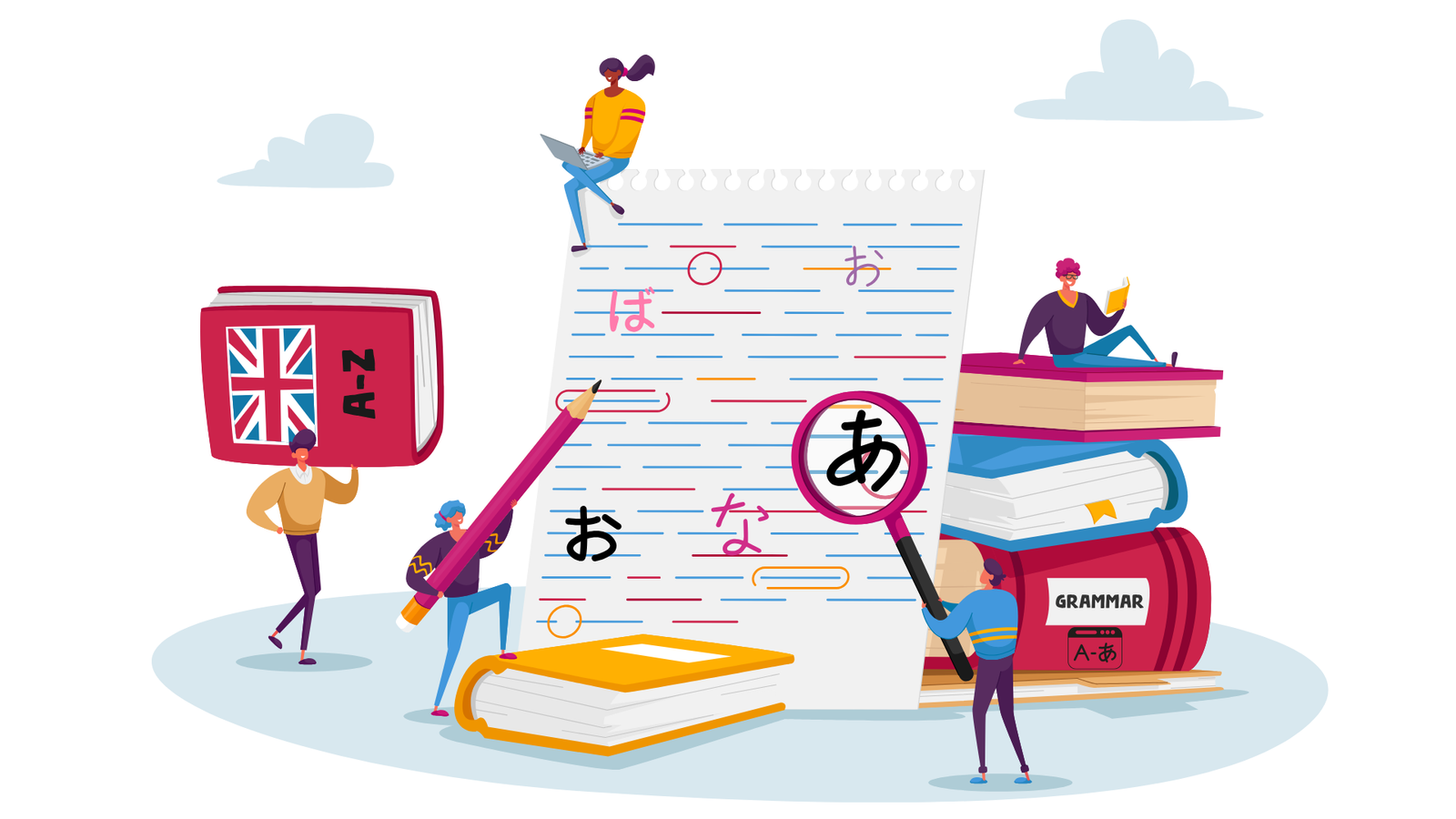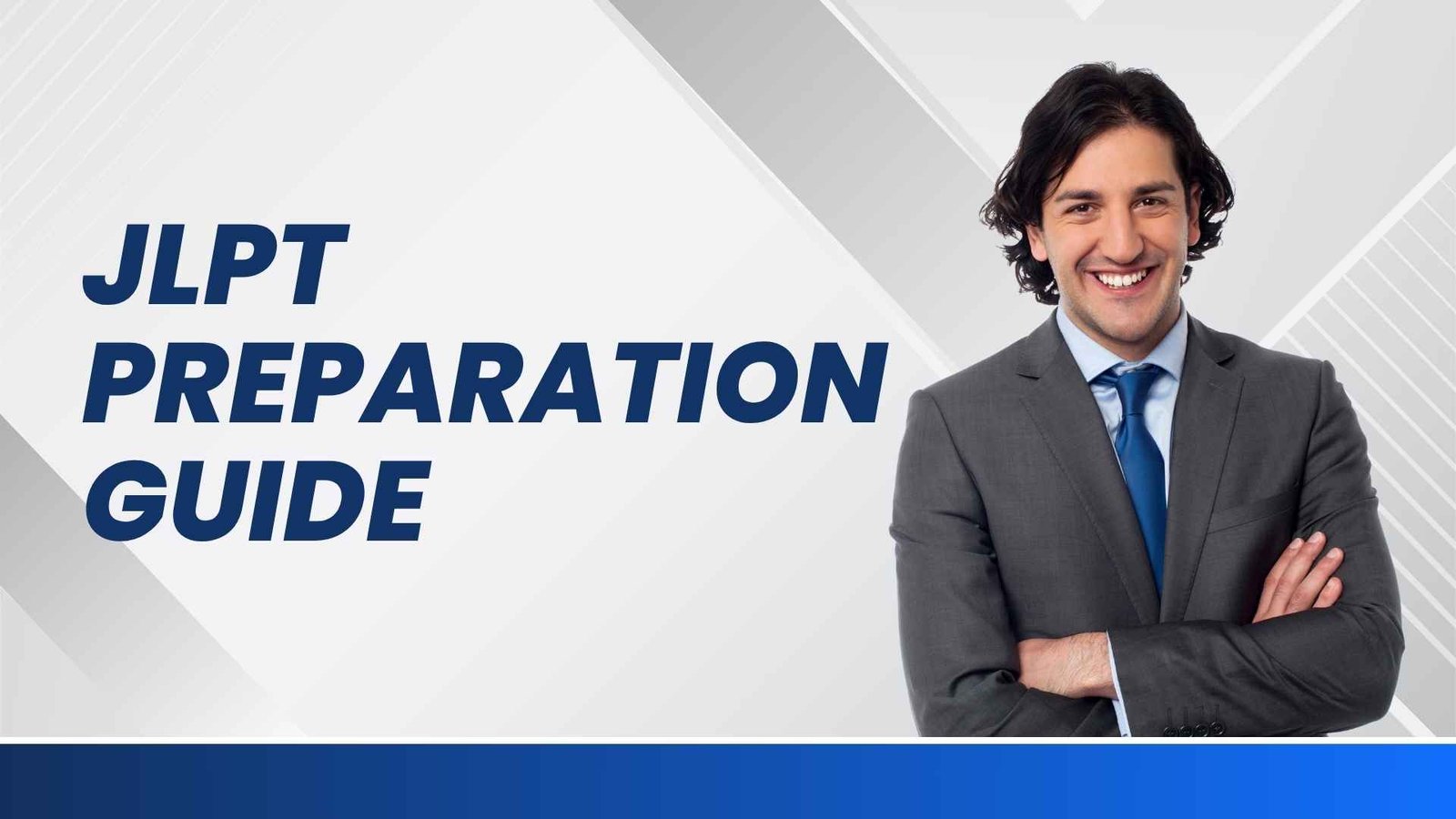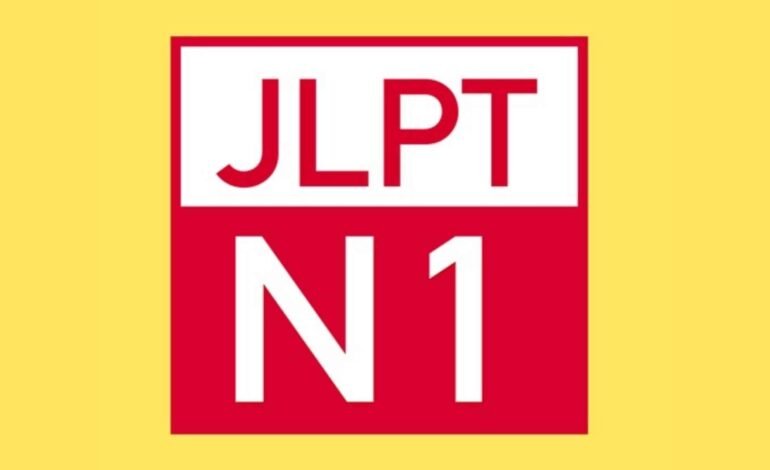
JLPT N1: Guide to Passing the Japanese Language Test
Passing the Japanese Language Proficiency Test (JLPT) N1 can feel like a formidable challenge, especially if you’ve faced setbacks before. Many test-takers find themselves stuck, even after successfully clearing lower levels. But what if your approach to studying was slightly off, not for learning Japanese, but specifically for conquering this standardized exam? This guide offers three proven strategies that can transform your test preparation, helping you pass the JLPT N1 and move forward with your language journey.
Having lived in Japan and studied the language for almost four years, I’ve navigated the complexities of the JLPT firsthand. I achieved my N2 certificate in two years, but the N1 proved to be a tougher nut to crack. My initial attempt in December 2022 resulted in a disappointing failure. Official Website.
JLPT N1 Journey: From Failure to Success
After my initial N1 scores, I took a break from the July 2023 test, recognizing I wasn’t truly ready. However, a year of dedicated study, with a focused commitment to the N1, changed everything. I decided to minimize distractions and fully immerse myself in preparation for the December 2023 exam. The results speak for themselves: I raised my overall score by an impressive 42 points and passed the exam!
This post is a direct result of that success, offering insights specifically tailored to passing the JLPT. While studying for the JLPT undoubtedly enhances your Japanese skills, the strategies here are designed to maximize your test-taking performance. If your primary goal is to master usable Japanese, I encourage you to explore other resources on speaking and reading. But if your mission is to conquer the JLPT N1, you’re in the right place.
I began implementing these methods in September for the December exam, committing fully to making it my last time taking the test. Let’s dive into the core strategies that made all the difference.
Study the Test Itself
This might sound counterintuitive, but it’s crucial: don’t just study for the test; study the test itself. This means getting your hands on as many past JLPT exams as possible and dissecting them meticulously.
Here’s how to do it:
- Practice, Analyze, Learn: Take an old exam, check your answers, and then create a dedicated study sheet or Anki set for any words, kanji, or grammar points you didn’t know. Crucially, include vocabulary from incorrect answer choices, not just the correct ones.
- Repetition for Retention: Re-do the test until you can achieve a perfect score. This active recall solidifies your understanding of the test’s structure and and content.
Like all standardized tests, the JLPT exhibits recurring patterns. What’s even more surprising, and something I rarely saw discussed, is that the JLPT straight-up repeats questions! My friend and I observed three repeat questions from old exams during my December test. Had I known about the possibility of exact question repeats, I would have intensified my study of past papers even further. For instance, the one question I believe I got correct in 問題2 (vocabulary) was a direct repeat from an old test—a point I wouldn’t have earned without prior exposure.
Even for the reading section, where exact passage repeats are unlikely, practicing with old tests is the most effective way to become familiar with the types of materials and questions you’ll encounter. Studying the test itself is a fast track to acquiring the specialized knowledge required specifically for the exam, rather than hoping that your general language studies will align perfectly with the test content.
Where to find past exams:
- Official Resources: The JLPT website provides two full-length practice tests for free, along with an older sample question booklet. Start here to get a feel for the exam.
- Third-Party Apps: Once you’ve mastered the official materials, explore the internet and app stores for additional old tests. Be prepared for some apps to have low ratings due to minor errors or non-professional development. However, the information they provide is invaluable. If an answer seems incorrect, double-check it with a quick Google search.
I personally used an app simply called “JLPT N1” (it took some searching to find!). Despite its bugs and occasional wrong answers, it offered free study mode and timed tests, all for a one-time purchase of about $5 USD.
Seriously, if you take away only one piece of advice from this article, let it be this: study previous tests rigorously! I filled pages with vocabulary and grammar from old exams that I hadn’t known, and my partner would dutifully quiz me. This dedicated effort paid off, either by improving my comprehension of passages or, in some cases, through direct repeat questions. Make comprehensive study sheets based on what you don’t know from these tests.
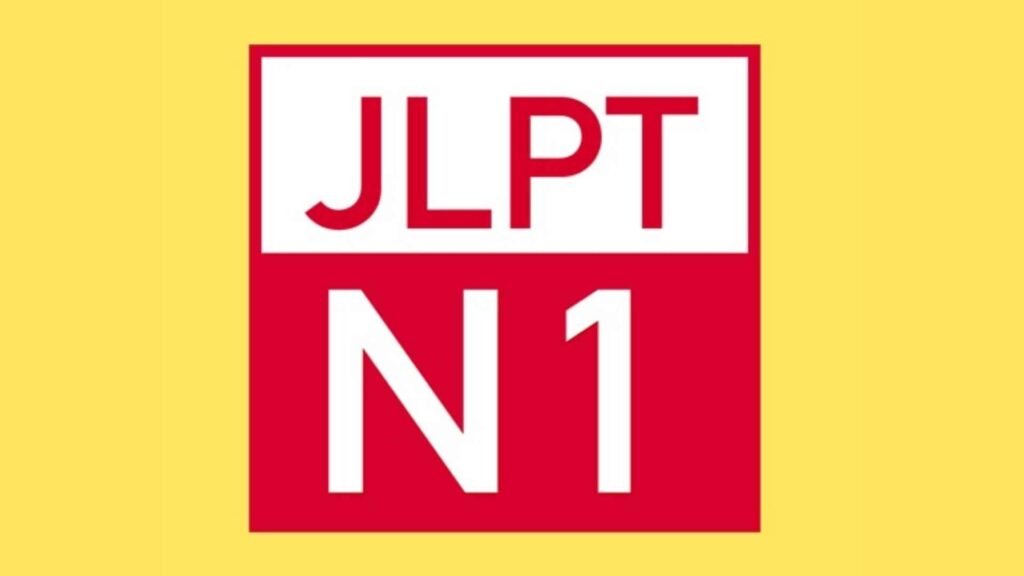
Know, Accept, and Work with Your Personal Study Style
Don’t fight your natural study style. If textbooks aren’t working for you, it doesn’t make you a bad student; it simply means you need to explore other methods. Personally, if I had tried to rely solely on self-studying Japanese textbooks, I’d likely still be at N5 level. I struggle to consistently open a textbook without an instructor guiding me. My breakthrough came from shifting my Japanese studies entirely to spaced repetition systems (SRS).
You may already know that I’m a big proponent of WaniKani for kanji studies. Its effectiveness in learning kanji rapidly is undeniable. I switched from textbooks to SRS applications for kanji about six months into my studies, after realizing I wasn’t making progress. Even with breaks, I learned all 2,000 basic kanji within three years after making that switch.
However, I initially failed to apply this logic to my grammar studies. I continued trying to learn grammar from books, even recommending some that worked better for me in previous posts. But ultimately, I’m not a textbook person, and consistency was a constant struggle. My first N1 attempt reflected this: my grammar score was abysmal, mirroring my lowest scores even on the N2. For the N2, I largely relied on immersion, barely getting halfway through a grammar book. This approach simply wasn’t enough for N1.
My turning point came last August when a friend, also an SRS user, recommended Bunpro. It’s a spaced repetition system specifically for Japanese grammar. While I’d heard of it, I was skeptical, despite my love for SRS! But her recommendation pushed me to try it. Bunpro offers a generous one-month free trial, allowing you to learn a substantial amount of grammar. I was hooked within the trial period. I was learning more grammar than I had in years, reminiscent of my N3 studies with a teacher.
Between August and December, I successfully learned all 180 N1 grammar points on Bunpro, plus a few N2 points I’d missed. When I took the test in December, the grammar section felt incredibly easy, allowing me to complete it quickly and allocate more time to other sections. My grammar score? An impressive ‘A’!
If you’re struggling with consistency in any section of your studies, I wholeheartedly recommend spaced repetition systems like WaniKani (for kanji), Bunpro (for grammar), and Anki (for customizable flashcards). These systems can revolutionize your study habits. Most offer free trials, so there’s nothing to lose by giving them a shot!
Utilize a JLPT Study Tracker Spreadsheet
My dismal first N1 attempt spurred me to research how others achieved success. While much of the advice I initially found seemed unrealistic (e.g., a full practice test daily when working full-time), I eventually stumbled upon a YouTube video detailing a perfect-score journey based primarily on SRS and old tests. I loosely adopted their method, adding Bunpro and omitting textbooks.
Crucially, this person provided a detailed guide on how they tracked their progress using a spreadsheet. This spreadsheet broke down question types, required skills for each, recommended study methods, and a system for tracking performance on specific questions. This was instrumental in identifying my weak areas.
My spreadsheet system adopted the following notes:
- What’s the test item about?
- What do I need to do?
- How can I improve this skill?
One significant benefit of this tracker was confronting my tendency to prioritize vocabulary and grammar over reading. The reading section of the JLPT is notorious for being grueling, long, and challenging. It’s easy to fall into the trap of focusing on kanji, vocabulary, and grammar, feeling productive because you’re answering many questions. However, neglecting reading will undoubtedly come back to bite you. My initial N1 reading score was a mere 23 out of 60 points—barely passing.
By using this study guide and forcing myself to practice reading as much as other sections, I saw remarkable improvement. I aimed for one reading passage per day on average in the months leading up to the test. The payoff was astounding: I raised my reading score by 24 points, making it my highest score on the exam. This improvement would have been impossible without a visual representation of my study habits pushing me to balance my efforts.
The JLPT N1 app I mentioned earlier also provides section-by-section score reports for timed tests, which is an excellent tool for tracking progress and ensuring balanced study across all sections.
Frequently Asked Questions (FAQs)
Q1: How long should I study for the JLPT N1 using these methods?
A1: The timeline can vary depending on your starting level and daily commitment. In my case, I committed to these methods in September for a December exam, which was about three months of intense, focused study. If you’re starting further out or have less time per day, you might need a longer period, perhaps 4-6 months, to cover all the material thoroughly and ensure consistent practice.
Q2: Can I pass the JLPT N1 without using textbooks at all?
A2: Absolutely! As demonstrated in this guide, it’s possible to pass the JLPT N1 by leveraging spaced repetition systems (SRS) for kanji and grammar, combined with extensive practice using past exams. If textbooks don’t align with your learning style, don’t force them. Focus on methods that keep you consistent and engaged.
Q3: How important is balancing all sections (vocabulary, grammar, reading) in my study?
A3: Balancing your study across all sections is critically important. As my own experience showed, neglecting the reading section can severely impact your overall score. The study tracker spreadsheet is particularly helpful here, providing a visual representation of your study habits and highlighting areas that need more attention. A strong score in one section can’t always compensate for a very weak score in another.
Q4: Are there any free alternatives to paid SRS apps like WaniKani or Bunpro?
A4: Yes, Anki is a popular and powerful free SRS tool that allows you to create custom flashcard decks for vocabulary, kanji, and grammar. You can find pre-made JLPT decks shared by other users, or create your own based on the content you extract from past exams. While it requires more initial setup than dedicated apps, it’s highly flexible and effective.
Q5: What if I find repeat questions on a third-party JLPT app that are different from the official past papers?
A5: It’s possible that some third-party apps might have minor errors or include “mock” questions that are similar but not identical to official past papers. If you encounter discrepancies, always prioritize the official JLPT sample questions and past papers provided by the JLPT website. For any questionable answers in third-party apps, cross-reference with reliable sources or perform a quick online search to verify.
Conclusion
Passing the JLPT N1 might seem like an insurmountable task, but with a strategic approach, it’s entirely achievable. By focusing on studying the test itself, embracing your unique learning style through efficient methods like spaced repetition systems, and diligently tracking your progress with a study spreadsheet, you can significantly enhance your chances of success. These methods, though distinct from general Japanese language learning, are your key to conquering the N1. Consistency in practice and a laser focus on the right content are the two pillars upon which your success will be built. Dedicate a few months to consistent, targeted practice, and you’ll be amazed at what you can accomplish.
Start implementing these strategies today and take the first step towards achieving your goal! What’s your biggest challenge in JLPT N1 preparation? Share your thoughts and questions below! JLPT N1 Exam Pattern 2025

